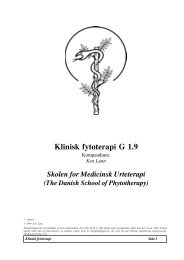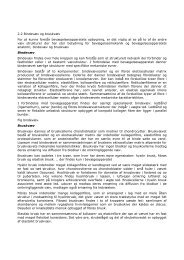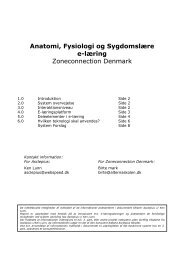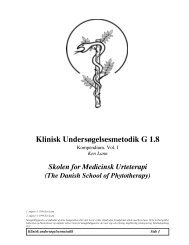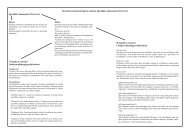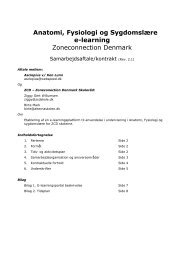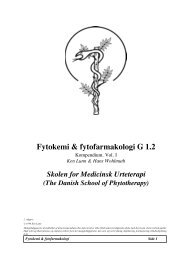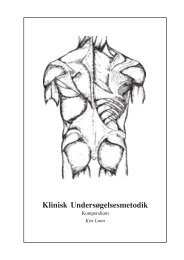PDF File - Asclepius Herbal Consultancy
PDF File - Asclepius Herbal Consultancy
PDF File - Asclepius Herbal Consultancy
Create successful ePaper yourself
Turn your PDF publications into a flip-book with our unique Google optimized e-Paper software.
To the Heart of the Matter<br />
the physiological mechanisms and a hypofunctional state corresponding to over-relaxation (Priest &<br />
Priest 1983). Parallels in these two approaches can be drawn in terms of the polarity of adaptive<br />
responses, involvement of sympathetic activity and the concept that relates protracted activity to a<br />
shift in response.<br />
The passive stress response described in PNE is characterised by high activity of the HPA system<br />
and enhanced CRF activity (see section 4.1.). CRF has been described as a regulator of ANS<br />
activity and via its interaction with the LC and AN, effects a reduction in sympathetic innervation.<br />
This can be seen as corresponding with the physiological exhaustion relating to over-relaxation<br />
described in the Physiomedicalist approach (appendix XIV: fig. 9.), in which system activity resorts<br />
to passive vegetative state (Priest & Priest 1983).<br />
This conceptual comparison can also be moved into the descriptive understanding of CV activity<br />
presented in the context of Physiomedicalist and PNE understanding. In terms of the application of<br />
the Physiomedicalist materia medica, the concept elucidates an understanding of the effects of the<br />
ANS upon CV system function, and its relation to emotional conditions.<br />
States of over-contraction relate to sympathetic activity and correspond with the active stress<br />
response described in PNE. Physiomedicalist understanding associates the state of over-contraction<br />
with Reflex conditions of protective adaptation and conditioning (Priest & Priest 1983). The CV<br />
system herbal remedies indicated under these conditions are tonic remedies that support cardiac<br />
activity, reduce vascular sympathetic innervation and depress the state of an irritable heart (see<br />
section 5.3: A. sativa, C. majalis, V. viride). The PNE concept of the active stress response is also<br />
considered as being a normal adaptive response. However, protraction of exposure to the factors<br />
that initiate this response ultimately causes the system to revert to the passive stress response,<br />
which is implicated in HPA/ANS dysregulation and subsequently CV illness (ibid.). In view of the<br />
PNE understanding, the Physiomedicalist therapeutic strategy dictated in states of over-contraction<br />
can be seen to be an appropriate measure in supporting the physiological system and subduing the<br />
nature of the response.<br />
Psychosomatic syndromes are related to over-relaxation and are described as being caused by<br />
stressed parasympathetic function, which infers a lack of sufficient sympathetic balance (Priest &<br />
Priest 1983). Within Physiomedicalism, the state of over-relaxation relates to the hypofunction of a<br />
physiological system or organ (ibid.). Within the PNE understanding of the CV system, negative<br />
psychological influences are described as primarily inhibiting sympathetic innervation (see section<br />
4.1.1.2.), which could be understood as relating to the stressed parasympathetic function described<br />
48



